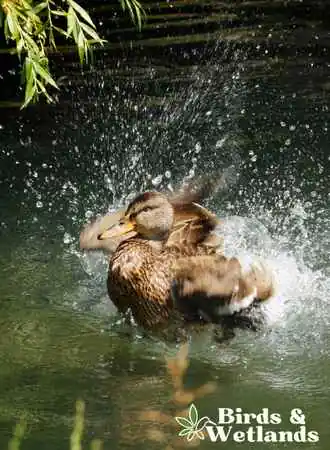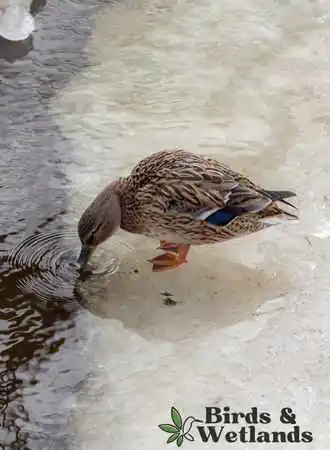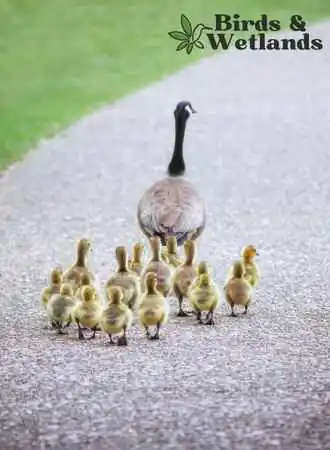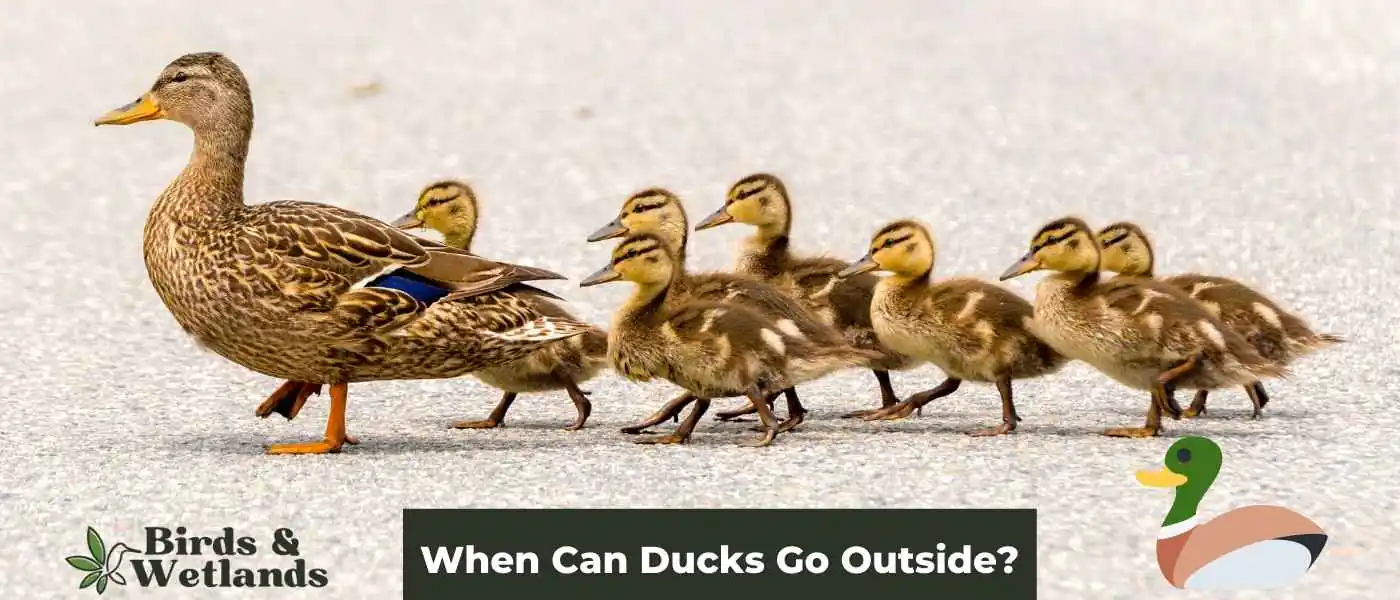Ducks are among the fascinating creatures around. Although they are so well-known, there is still much to learn about these animals.
Like, when can ducks go outside?
Ducklings can generally start to go outside once they are fully feathered, which is typically around 2 to 3 weeks of age. However, they should only be allowed outside in good weather, and should be supervised until they are older and more capable of defending themselves from predators.
Key Takeaways on the Best Time to Let Ducks Go Outside
- Ducks can go outside when they are 3 to 4 weeks old, but only if the environment is safe and they can protect themselves from predators.
- Ducks should be fully feathered before going outside permanently. If the ducks are spending the nights out, the nighttime temperature should not be lower than 50° F.
- Ducklings can spend warm, sunny days outside under careful supervision when they reach 3-5 weeks of age.
- Ducks are fully feathered at the age of 6th-7th week, and it’s ideal to leave them outside then as they can regulate their body temperature.
- Pet ducks can sleep outside if the weather is not freezing cold, and they have a safe pen or shelter.
- Ducklings with baby fluff cannot stay outside as they cannot regulate body temperature. The ideal temperature for ducklings should be 50 degrees or higher.
Things to Consider Before Moving Ducklings Outside
Hatching duck eggs into young ducks and raising ducklings can be a rewarding experience. In fact, many people consider duck eggs more difficult to hatch than chicken eggs.
Most duck owners keep their young ducks indoors for the first few weeks to have better control over their food and water, temperature, and other important aspects of their daily lives. But most importantly, keeping ducklings inside protects them from diseases and predators that are common outside, ensuring they remain healthy and safe as they grow.
Dos and Don’ts of Letting Ducks Outside:
Dos
- Do ensure they are fully feathered and can regulate their body temperature before letting them outside permanently.
- Do supervise them when they are outside until they are old enough to fend for themselves.
- Do provide them with a shelter that protects them from predators, inclement weather, and heat.
- Do ensure they have mastered drinking water without tripping and drowning before letting them outside.
- Do allow them to go on short, carefully supervised swims when they are 3-4 weeks old.
Don’ts
- Don’t let them outside if they still have baby fluff and cannot regulate their body temperature.
- Don’t let them outside if the temperature is below 50° F.
- Don’t let them outside if they have not yet mastered drinking water without tripping and drowning.
- Don’t let them outside unsupervised until you are confident they can swim and fend for themselves.
There will come a time when young ducks are ready to run around outside. Here are a few things to consider when moving your ducks outside.
Feathers

Four-weeks old ducks are way too young to be taken outside. Wait until your young ducks are at least seven to nine weeks old before taking them outside. During this time, most ducklings are already fully-feathered and have lost their baby fluff.
Young ducklings’ primary source of insulation and warm protection is all their feathers. Feathers promote healthy growth and development and provide warmth and protection from the elements.
Ducks produce preen oil, stored within their undercoats and helps keep their plumage clean and water resistant.
They spread this oil from oil glands across all aspects of their waterproof feathers by grooming themselves with their beaks, ensuring they stay dry, fluffy, and well-insulated. Note that ducklings hatched in an incubator do not have these oils.
| Age (Weeks) | Outdoor Activity | Temperature Consideration |
|---|---|---|
| 3-4 | Begin supervised outside exploration | Above 50° F |
| 4 | Can move outside if temperature allows | Above 50° F |
| 6-7 | Fully feathered, can live outside | Above 50° F |
Young ducklings, in particular, rely on feathers to help them regulate body temperature and survive in harsh environments. As such, they are a priceless resource on which all ducklings rely for survival.
Temperature
When to move young ducks is one of the most important decisions a duck keeper needs to make. We already know that feathers are vital to a duckling’s survival outside, but the temperature outside is just as important.
It would help if you waited until the temperature reached at least 20 degrees Fahrenheit (-6 degrees Celsius). Ducks are happiest and most active when the temperature is between 60 and 70 degrees Fahrenheit (21° C). The temperature inside the brooder should be the same as the outside.
Only take your ducklings outside on sunny and warm days. Ducks living in warmer climates can go outside sooner than those that live in northern states.
Temperature is also the reason why older ducks fly south for the winter when the temperature drops.
Ability to Drink Water

Before taking your ducklings outside, they must learn how to drink clean water properly. Ducklings are typically taught how to drink clean water from a shallow bowl, plastic tub, slightly deeper water dish or pond by their mother or other adult ducks in their natural habitat.
This allows them to develop critical muscle memory to help them survive independently. Also, most ducks dip their beaks in the water to keep their mucous membranes moist.
Ducklings risk death if they do not learn this basic skill. If they know how to drink water properly, they can regulate their internal temperature and stay hydrated even in hot or cold weather. So, only take your ducklings out if they can drink water without potentially drowning.
Ducklings Ability to Swim
Ducklings must learn to swim before venturing out into the wider world. Unlike many other types of birds, ducklings are naturally drawn to water. They are naturally buoyant and can hold their breath for extended periods underwater, making them excellent swimmers.
Introducing a duckling to water at a young age is critical to ensuring its safety and well-being. A duckling could easily drown or become prey to other predators in the wild if not properly trained. At four weeks, allow your ducklings short, carefully supervised swims.
Suitable Shelter
Ducklings are young birds completely dependent on their parents for protection and care. Because they are so vulnerable at this stage of development, ensuring they have adequate shelter before allowing them to go outside is critical. This is especially true in vulnerable seasons when extreme weather and predators seriously threaten these young animals.
When they are old enough, young ducks sleep outside. Water ducklings benefit from a shelter in a variety of ways.
It provides a safe place to rest and stay warm. You can place a heat lamp in the shelter. Heat lamps help keep your flock warm, especially when nighttime temperature is low. The shelter should have windows to bring in fresh air and natural light. Excess moisture can cause health problems for your flock.
A spacious shelter or DIY brooder made from a sturdy cardboard box or spare bathtub acts as a barrier against harsh winds, rain, and sunlight, which can harm ducklings’ health.
Apredator-proof shelter with good ventilation can protect your ducklings from hungry predators looking for fresh meat.
TRIXIE Pet Products Natura Duck Coop
Are you looking for a reliable, safe, and accommodating living space for your ducks? The TRIXIE Pet Products Natura Duck Coop is the perfect abode that combines function, comfort, and durability, ensuring your ducks enjoy their surroundings.

Pros
- Spacious Design: The TRIXIE Pet Products Natura Duck Coop provides ample space for your ducks to roam and rest comfortably, promoting their well-being and happiness.
- Convenient Cleaning: With a pull-out plastic tray, this duck coop makes cleaning a breeze, helping maintain hygiene without the usual hassles.
- Robust Construction: Made of glazed pine, this coop is built to withstand the elements, ensuring a long-lasting and sturdy home for your ducks.
- Security: The hinged roof with locking arm can be opened from above, providing easy access while also ensuring your ducks’ security against potential predators.
- Easy Assembly: With all necessary hardware included and a detailed instruction guide, setting up your TRIXIE Pet Products Natura Duck Coop is a simple and straightforward process.
Cons
- Size Limitation: While the TRIXIE Pet Products Natura Duck Coop offers ample space, it may not be suitable for a large flock of ducks. Owners with a significant number of ducks may need to consider additional or larger housing options.
- Lack of Insulation: The design of the coop may not provide adequate insulation in extremely cold climates. Additional measures may be necessary to keep your ducks warm during harsh winters.
Enough Space

Generally, domestic and wild ducks and other poultry require a lot of floor space to thrive and be happy. If you have ducklings that you intend to take outside soon, you must consider the size of their outdoor area.
Ducklings and full-grown ducks require plenty of space to roam and explore. They may become agitated and stressed if confined in a small space, leading to behavioral issues and illness.
When ducklings stay outside, they should ideally have an outdoor pen at least several hundred square feet in size, with plenty of grassy playing areas, shade, and shelter from the elements.
Can You Train Ducks to Go Outside?
Yes, it’s entirely possible to train ducks to go outside. Here’s how you prepare your flock:
Begin by establishing a safe, confined area where the ducks can become accustomed to being outside. This area should ideally include a small pond or pool with warm water or in an ideal temperature where they can practice swimming and diving.
Handle ducklings gently. Once your ducks are settled in their new environment, begin exposing them to other stimuli, such as toys and noisy objects. This will help them become accustomed to common sounds and gain experience with various things. Evaluate your duckling’s growth and make sure its needs are met.
Next, increasing the ducks’ sense of physical activity is critical. You can accomplish this by allowing them to run around and play even when kept inside the house or barn. This could include items such as balls or obstacle courses that they can navigate using their natural agility and speed. Monitor your duckling’s behavior for any irregularities, especially in their first week.
Practice training the ducks to respond to your verbal commands by calling their names or clucking like a duckling when hungry or scared. Once they’re used to these prompts outside, ask for them more consistently whenever you take them out for exercise or playtime activities like flying laps around the yard or jumping into the pond from a great height.

